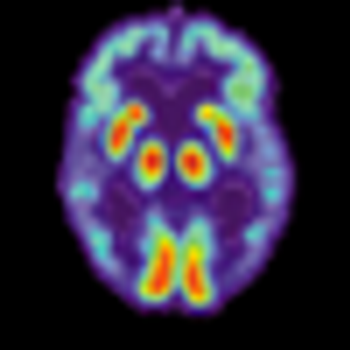
Despite the prevalent perception that cognitive decline in the aged population is inevitable, researchers with Northwestern University's SuperAging Project are finding that "excellent memory capacity in late life is a biological possibility."

Despite the prevalent perception that cognitive decline in the aged population is inevitable, researchers with Northwestern University's SuperAging Project are finding that "excellent memory capacity in late life is a biological possibility."

Because of new imaging techniques and advances in our understanding of neurophysiology, neurological and psychiatric disorders are increasingly being recognized as disorders of circuit functions in the brain. Using techniques such as DBS, neurosurgeons are able to pinpoint malfunctioning circuits and to recalibrate them.

Less common but still important syndromes connected with Alzheimer disease include traumatic brain injury, infectious and inflammatory disorders, alcohol-induced dementia.

The evolution of deep brain stimulation for various neuropsychiatric disorders results from advances in structural and functional brain imaging, increased understanding of neurocircuitry of the brain, and improvements in neurosurgical techniques and equipment.

The proposed new diagnostic categories and guidelines for Alzheimer's disease include not only dementia, but also the preclinical and mild cognitive impairment (MCI) phases of AD.

Medical professionals may be reluctant to initiate a discussion about driving with older patients in anticipation of a negative impact on the physician-patient relationship.

New diagnostic guidelines and advanced screening tools enable clinicians to detect dementia and Alzheimer disease earlier than ever.

Age is a major risk factor for the development of Alzheimer disease and other dementias. New technologies in brain imaging represent major advances in our ability to diagnose age-related cognitive and behavioral disorders.

While there are currently no treatments for AD, it is important to examine what we are treating. By the time AD is diagnosed by clinical symptoms, 8 to possibly 15 years of pathological damage has already occurred.

Anton Porsteinsson, MD, discusses some specifics for fine-tuning the care of patients with Alzheimer disease. Here: optimizing physical health and mental stimulation and promoting a brain-healthy diet and aerobic exercise.

Can stimulants increase function in people with early stage Alzheimer disease? Here, Anton Porsteinsson, MD, discusses the pros and cons.

In this video, Anton Porsteinsson, MD, discusses some of the causative factors of Alzheimer disease: genetics, environment, personality. He goes on to explain that although there are clear determinants for AD, there are preventive actions that can be taken to delay the onset of disability.

The Alzheimer’s Association announced in July that the FDA had accepted its recommendations to modify exclusion and monitoring criteria for clinical trials of agents that affect β-amyloid protein in the brain.

If telling patients they have “pre-clinical Alzheimer’s” or “MCI due to Alzheimer’s Disease”-absent effective treatment-produces more emotional suffering than it relieves, a difficult ethical question arises; namely, can such a disclosure be justified under the foundational principle of non-malfeasance?

The furor surrounding the recently proposed Alzheimer's Guidelines was provoked by their premature attempt to introduce early diagnosis, well before accurate tools are available. The same laudable, but currently clearly unrealistic ambition has propelled two of the worst suggestions for new diagnoses in DSM-5: Psychosis Risk and Mild Neurocognitive.

In July, panels sponsored jointly by the National Institute of Aging and the Alzheimer's Association presented controversial proposed guidelines for diagnosing Alzheimer's at three different stages of its progression.

Previously, I have been quite critical of the DSM-5 suggestion to introduce a new diagnosis-- Minor Neurocognitive Disorder--on the grounds that it would create a large false positive problem and would lead to unnecessary worry and cost with no useful intervention.

Researchers who have spent their careers studying schizophrenia and mood disorders might be forgiven a bit of “biomarker envy.” At long last, it seems that the neurologists and neuropsychiatrists have developed some fairly sensitive and specific “lab tests” for Alzheimer’s Disease (AD).

Since the early twentieth century, when Alois Alzheimer and Emil Kraepelin constructed it as a unified clinical-pathological entity, Alzheimer’s disease has been both one of the most stable and one of the most problematic neuropsychiatric entities.

The causes of Alzheimer disease and attempts to predict who is at risk for it have been confounding the medical profession ever since Dr Alzheimer first described the disorder in 1906. Finally, a breakthrough in dye and imaging technology may be the key to solving the puzzle.

Of the screening tools available to help identify early symptoms of Alzheimer’s disease, which is best?

Mortality in elderly patients with dementia markedly and progressively increases with extended use of antipsychotics, according to the first long-term controlled study of risk in this population. Earlier evidence of this risk was from short-term trials not exceeding 14 weeks.

Mortality in elderly patients with dementia markedly and progressively increases with extended use of antipsychotics, according to the first long-term controlled study of risk in this population. Earlier evidence of this risk was from short-term trials not exceeding 14 weeks.

A discovery about the brain protein KIBRA, commonly found in the kidneys and brain, could lead to future treatments for Alzheimer disease (AD). Investigators at the Translational Genomics Research Institute (TGen), lead by Corneveaux and Liang, in Phoenix found that the risk for AD is 25% lower in persons who carry the memory-enhancing KIBRA gene.1 This fi nding indicates that there might be a link between KIBRA and some of the proteins with which it interacts.

Agitation in older adults is frequently associated with multiple psychiatric and medical conditions and comorbidities. It commonly occurs in patients with anxiety, affective illness, psychosis, dementia, stroke, brain injury, delirium, or pain.